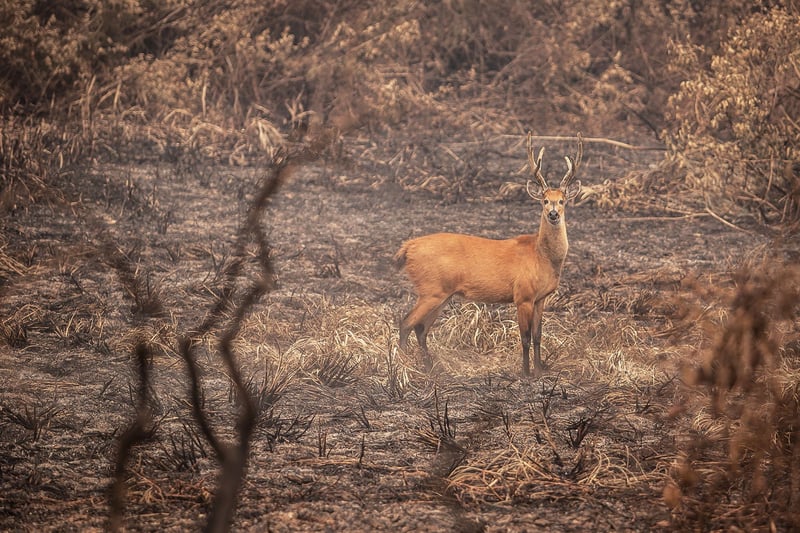
World leaders at COP26 ignore the impact of agriculture on climate crisis
News
Animal agriculture is being ignored at COP26. We believe animal agriculture and welfare is key to addressing our climate emergency. And the time to act is now.
Animal agriculture is being ignored at COP26 despite the industry producing more greenhouse gas emissions than all cars, planes and other forms of transport put together.1
A last-minute slot on COP26’s Nature Day on 6th November has now been set aside, but it had been largely forgotten in the lead up before campaigners spoke up.
Lindsay Duncan, World Animal Protection farming campaign manager said:
“Animal agriculture should be a core topic of COP26, not thrown in at the last minute as an afterthought. This sector is huge and unsustainable and if left unchecked is projected to produce 52% of global greenhouse gas emissions in the coming decades, 70% of which will come from meat and dairy 2.
“We need a drastic reduction in meat and dairy consumption and an end to factory farming to help avoid further damage to the climate and issues for animal welfare.”
Large swathes of rainforests including the Amazon and Cerrado are being lost to make way for crops such as soya to feed farm animals in other countries, such as the UK, which imports an average of 2 million metric tonnes of soya meal each year, 98% of which is used for animal feed 3.
Tackling animal agriculture and welfare is key to tackling the climate emergency, with no pathway to achieving the objectives of the Paris Agreement without a massive decrease in its scale.
Our report earlier in the year found that Barclays and HSBC are in the top three banks in Europe investing in companies at high risk of being linked to the deforestation of the Amazon and Cerrado for cattle and soya production to feed factory farmed animals globally.
- Animal agriculture accounts for 37 per cent of methane (CH4) emissions, which has more than 20 times the global warming potential of CO2, AND 65 per cent of nitrous oxide (N2O) emissions, which has almost 300 times CO2’s global warming potential 4
- Globally, scientists estimate that deforestation for animal feed crops and animal grazing generates 2.4 billion tons of CO2 annually. Moreover, burning fossil fuels to produce fertilizers for animal feed crops emits 41 million tons of CO2 per year 5
- An acre of rainforest is felled to create room for cattle farming every six seconds – that’s approximately 14,400 acres daily 5
We are calling on the public to ‘Say Yes to Less’ meat and dairy on their plates to help put an end to factory farming. You can find out more about the campaign here.
Source references:
1 1.41 trillion cow burps and 23.7 billion cowpats damaging the planet daily | World Animal Protection
2Less is More: Reducing meat and dairy for a healthier life and planet, Greenpeace International
3UK Roundtable on Sustainable Soya: Annual progress report, 2019
4The Humane Society
5Green and Growing
Make a difference. Join our community.
We campaign to improve animals' lives in the UK and around the world. Why not join us today?
Image credits: News page: World Animal Protection / Noelly Castro; Hero image: Bloomberg Creative via Getty Images
Large swathes of rainforests including the Amazon and Cerrado are being lost to make way for crops.